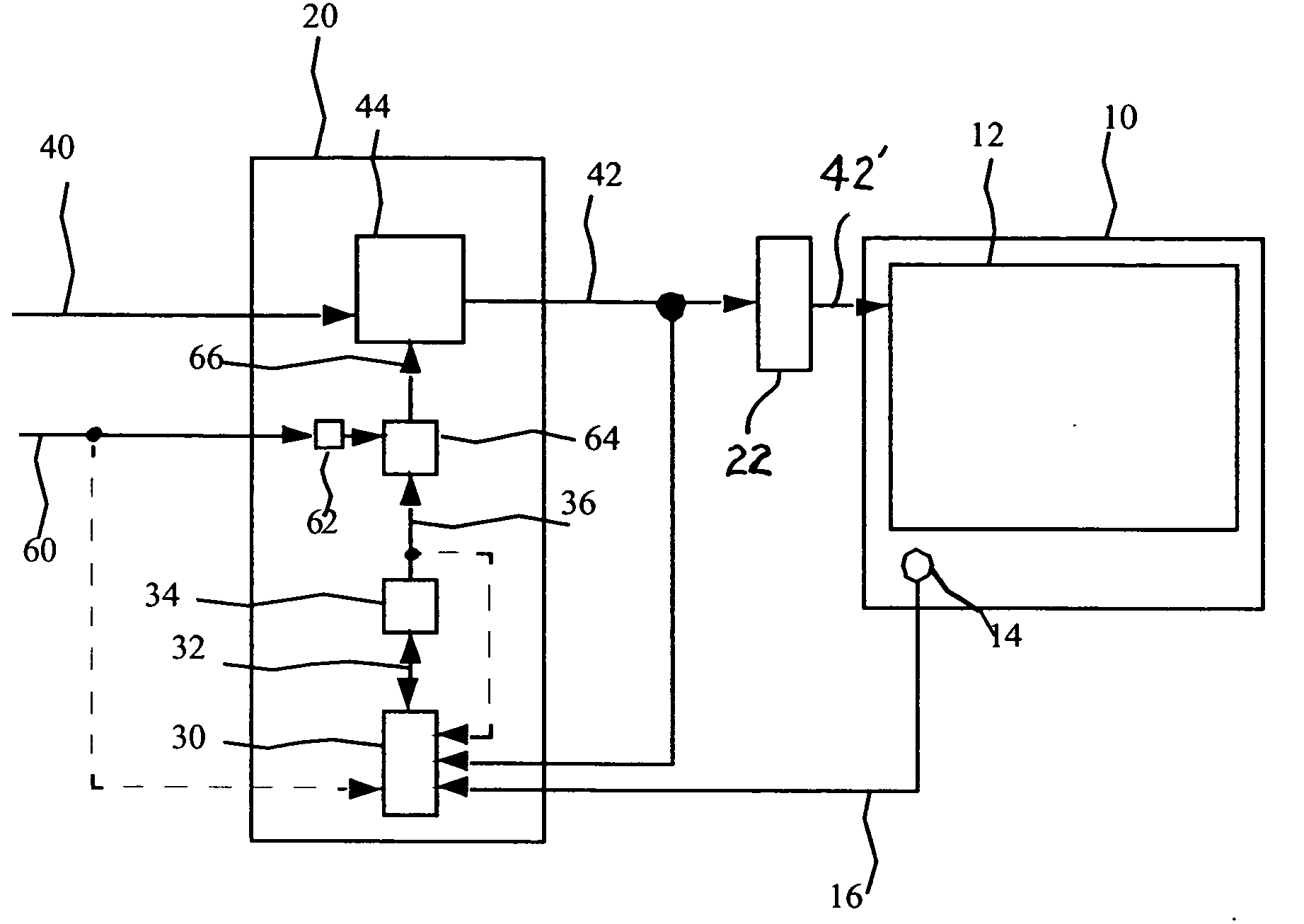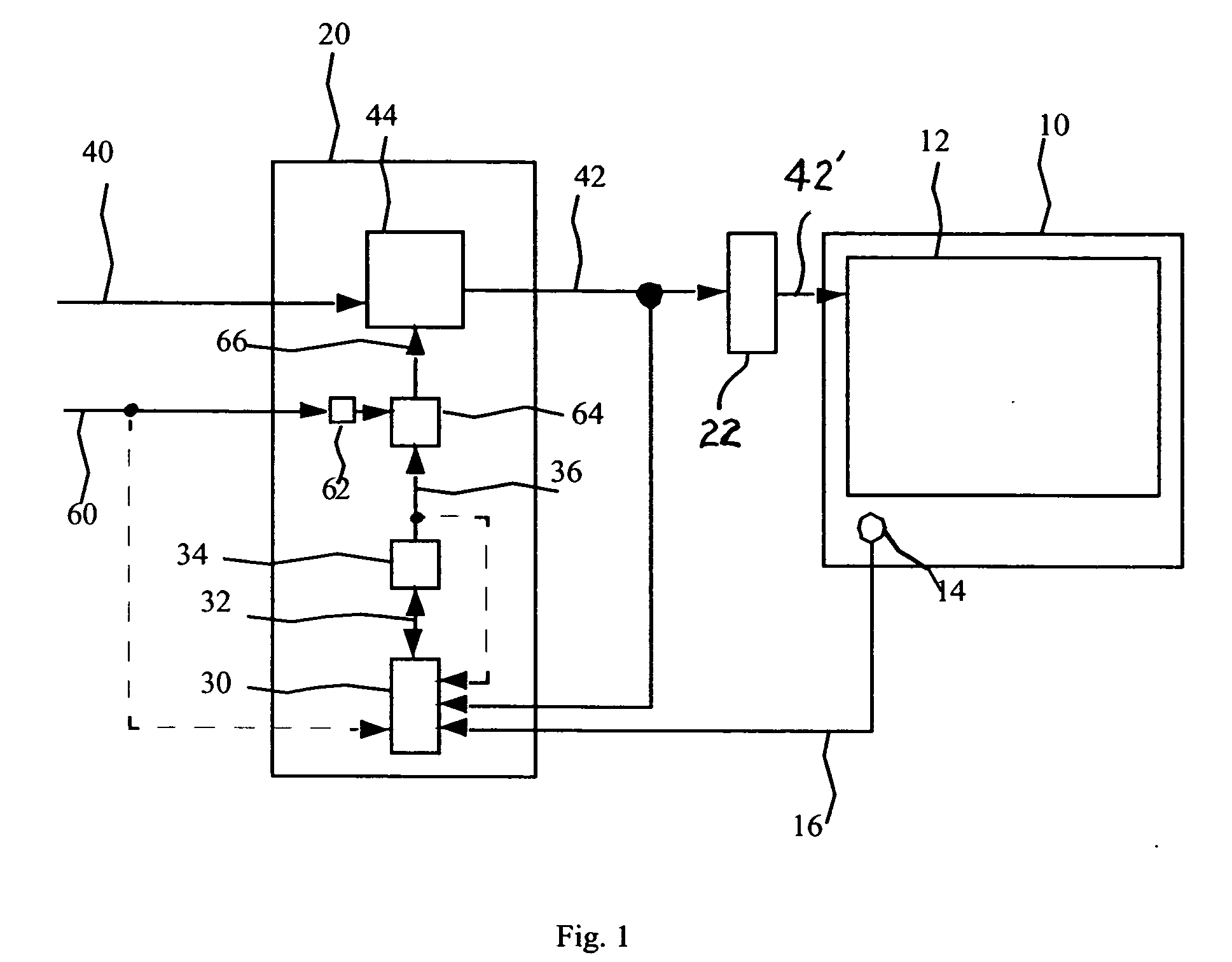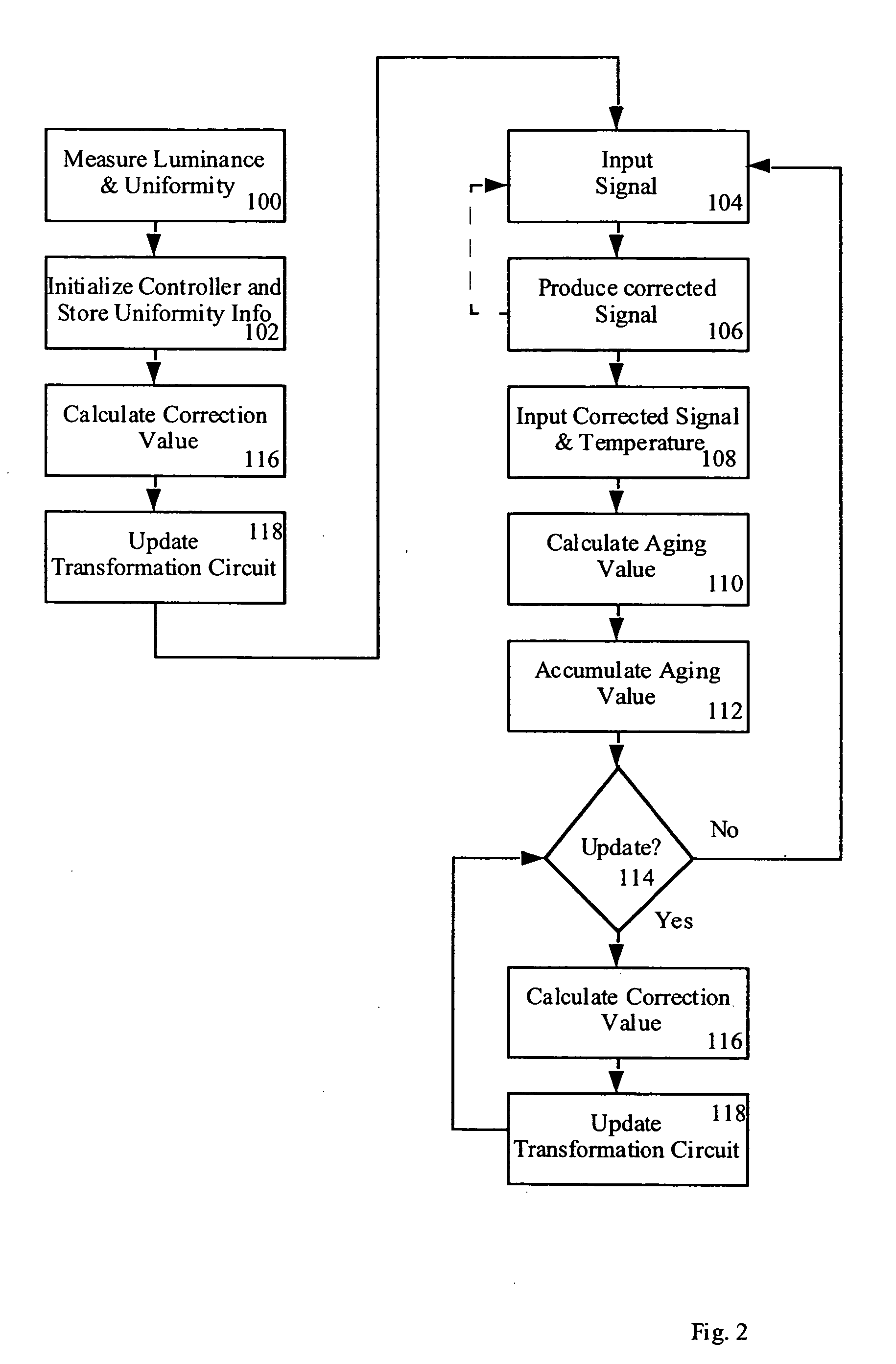System for controlling an OLED display
a technology of display device and control system, which is applied in the direction of static indicating device, instruments, etc., can solve the problems of differential color aging and display, less efficient light emission, and reduced display life, so as to reduce light emission efficiency and simple implementation
- Summary
- Abstract
- Description
- Claims
- Application Information
AI Technical Summary
Benefits of technology
Problems solved by technology
Method used
Image
Examples
Embodiment Construction
[0036] Referring to FIG. 1, a system for controlling an OLED device having an output that changes with time or use comprises an OLED device 10 responsive to a corrected digital input signal 42 having an array of one or more light emitting elements 12 and a temperature sensor 14 for sensing the temperature of the OLED device 10 and producing a temperature signal 16; a controller 20 including: a first calculation circuit 30 responsive to the temperature signal 16, the digital corrected input signal 42, and a pre-determined aging function to produce a digital aging value 32 corresponding to the aging of the light emitting elements; an accumulation circuit 34 for integrating the digital aging value 32 over time to provide a digital accumulated aging value 36; a storage circuit 62 responsive to a uniformity correction signal 60; a second calculation circuit 64 responsive to the storage circuit 62 and the digital accumulated aging value 36 for calculating a digital correction signal 66; a...
PUM
 Login to View More
Login to View More Abstract
Description
Claims
Application Information
 Login to View More
Login to View More - R&D
- Intellectual Property
- Life Sciences
- Materials
- Tech Scout
- Unparalleled Data Quality
- Higher Quality Content
- 60% Fewer Hallucinations
Browse by: Latest US Patents, China's latest patents, Technical Efficacy Thesaurus, Application Domain, Technology Topic, Popular Technical Reports.
© 2025 PatSnap. All rights reserved.Legal|Privacy policy|Modern Slavery Act Transparency Statement|Sitemap|About US| Contact US: help@patsnap.com



